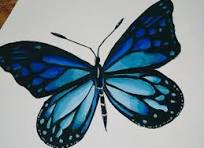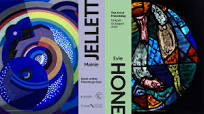The Beauty of Butterfly Painting
Butterflies have long been admired for their delicate beauty and graceful presence. In the world of art, butterfly painting holds a special place as a symbol of transformation, freedom, and the ephemeral nature of life.
Artists throughout history have been captivated by the intricate patterns and vibrant colors of butterflies, often incorporating them into their paintings to evoke a sense of wonder and enchantment. The act of capturing the essence of these ethereal creatures on canvas requires skill, patience, and a deep appreciation for the natural world.
Butterfly painting offers artists a unique opportunity to explore themes of metamorphosis and rebirth. The process of depicting a butterfly in its various stages – from caterpillar to chrysalis to winged beauty – allows artists to convey powerful messages about growth, change, and the cyclical nature of life.
Whether painted in realistic detail or rendered in abstract form, butterfly paintings have a universal appeal that transcends cultural boundaries. They serve as reminders of the fleeting nature of beauty and the importance of embracing transformation as a natural part of existence.
Through butterfly painting, artists are able to capture moments of fleeting beauty and preserve them for eternity. Each brushstroke is a testament to the delicate balance between fragility and strength that defines these magnificent creatures.
So next time you come across a butterfly painting, take a moment to appreciate not just its aesthetic appeal, but also the deeper symbolism it carries – a reminder that life is ever-changing, full of possibilities, and deserving to be celebrated in all its fleeting glory.
Exploring Butterfly Painting: Symbolism, Techniques, and Artistic Themes
- What is the symbolism behind butterfly painting?
- How do artists incorporate butterflies into their paintings?
- What are the common themes explored in butterfly paintings?
- Are there different styles or techniques used in butterfly painting?
- Why are butterflies a popular subject in art?
What is the symbolism behind butterfly painting?
Butterfly painting holds deep symbolic significance in the art world. The butterfly, with its transformative journey from caterpillar to winged beauty, represents themes of metamorphosis, rebirth, and the cyclical nature of life. Artists use butterfly symbolism to convey messages of growth, change, and the ephemeral beauty of existence. The delicate yet resilient nature of butterflies serves as a powerful metaphor for the human experience – reminding us to embrace transformation, appreciate fleeting moments of beauty, and recognize the interconnectedness of all living beings. Through butterfly painting, artists invite viewers to reflect on the transient nature of life and the endless possibilities that come with embracing change.
How do artists incorporate butterflies into their paintings?
Artists incorporate butterflies into their paintings in a variety of creative ways, each reflecting their unique style and artistic vision. Some artists meticulously study the intricate details of butterflies, capturing their vibrant colors and delicate patterns with precision and realism. Others choose to depict butterflies symbolically, using them to convey themes of transformation, freedom, or beauty. From subtle accents to central motifs, butterflies can be integrated into paintings through various techniques such as blending them seamlessly into natural landscapes, juxtaposing them with other elements for dramatic effect, or even abstracting their forms to evoke a sense of mystery and wonder. By skillfully incorporating butterflies into their artwork, artists add depth, symbolism, and visual interest that captivate viewers and invite them to explore the deeper meanings behind these enchanting creatures.
What are the common themes explored in butterfly paintings?
In butterfly paintings, artists often explore common themes such as transformation, beauty, freedom, and the ephemeral nature of life. The intricate patterns and vibrant colors of butterflies symbolize growth and change, reflecting the metamorphosis from caterpillar to butterfly. These artworks convey a sense of wonder and enchantment, capturing the delicate balance between fragility and strength. Butterfly paintings serve as visual metaphors for rebirth, renewal, and the cyclical nature of existence, inviting viewers to contemplate the transient beauty of the natural world and appreciate the fleeting moments of grace that define our lives.
Are there different styles or techniques used in butterfly painting?
In butterfly painting, artists employ a variety of styles and techniques to capture the beauty and essence of these delicate creatures. Some artists opt for realistic depictions, focusing on intricate details such as wing patterns and color variations to create lifelike representations. Others may choose a more abstract approach, using bold brushstrokes and vibrant colors to convey the essence of a butterfly rather than its exact likeness. Additionally, different mediums such as watercolors, acrylics, or mixed media can be utilized to achieve unique textures and effects in butterfly paintings. The diversity of styles and techniques in butterfly painting allows artists to express their creativity and interpretation of these enchanting insects in myriad ways.
Why are butterflies a popular subject in art?
Butterflies are a popular subject in art due to their symbolic significance and aesthetic appeal. These delicate creatures represent transformation, beauty, and freedom, making them a powerful symbol of change and growth. Artists are drawn to the intricate patterns and vibrant colors of butterflies, which provide endless inspiration for creative expression. The ephemeral nature of butterflies also adds a sense of mystery and enchantment to artworks, capturing the imagination of viewers. By depicting butterflies in their art, artists can convey themes of metamorphosis, rebirth, and the fleeting beauty of life, resonating with audiences on a deep emotional level.





